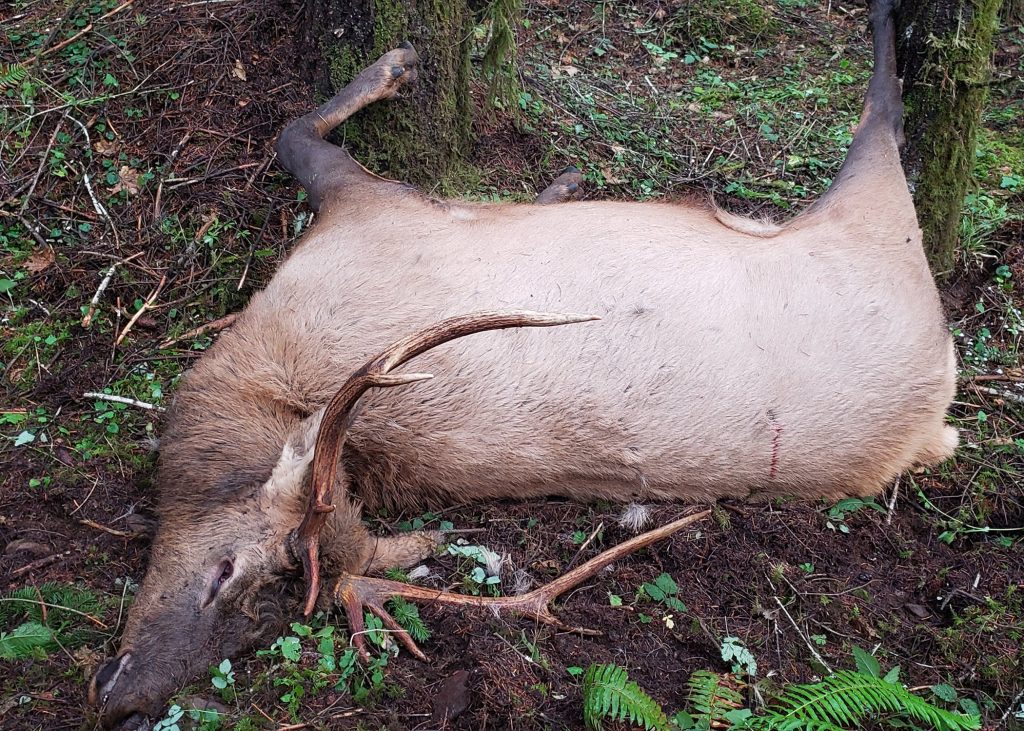Tips Needed On 2 Elk Found Dead In Clatsop Co. Last Month
THE FOLLOWING IS A PRESS RELEASE FROM THE OREGON DEPARTMENT OF FISH AND WILDLIFE
Two elk were recently poached and left to waste near Hwy 26 in Clatsop County. Members of the public who heard shots fired or noticed unusual activity near the Hwy 26 rest stop or near McGregor State Forest Road on or about Oct 15 or 16 should contact Oregon State Police.

Both elk were found on private timber lands, but not together and the cases are likely not related according to Oregon State Police Fish and Wildlife Senior Trooper David Herman.
OSP Senior Trooper Herman found the first elk lying in torn sod and muddy ground and in the early stages of decomposition The elk was likely shot a few days earlier, on October 14 or 15.

He located the entry wound; a rifle shot to the spine, taken from behind the animal. Herman suspects someone shot the elk on Clatsop County forest land near the Hwy 26 rest stop, likely in the area of the first few miles McGregor State Forest Road.
The second elk was killed in an unknown location, with an unknown weapon on or about Oct 16. The poacher removed the head, two legs and the back strap. The poacher transported most of the animal by vehicle to the Sugarloaf Mainline and dumped the carcass down an embankment near milepost 1.5. This is also near milepost 5 on Hwy 26.
A Lewis and Clark Timberlands employee found the carcass and reported it to Senior Trooper Herman. Herman investigated the dump site and estimates the bull was a large trophy but is not certain without the head. He suspects the elk was taken from a nearby herd.
Herman is concerned about the number of poached deer and elk he has investigated over the past two years. He says the number is on the rise in the area.
“I’ve found at least 15 elk killed off-season in the last couple of years,” he said, “And those are just the ones that we get called about. There are many more that we don’t find.”
Roosevelt elk are indigenous to the Oregon coast range. An estimated 59,000 “Rosies” meander among mossy trees and brush on their treks from mountainside to seashore via fields, housing developments and major roadways. They can grow to 1100 pounds and are the third largest mammal in North America. Regular hunting seasons keep populations in check. The elk can be unique city dwellers and some coastal towns reap financial rewards from tourists eager to see them up close.
The Turn In Poachers program will award four hunter preference points or $500 for information that leads to a citation in either of these cases.
The Stop Poaching Campaign educates the public on how to recognize and report poaching. This campaign is a collaboration among hunters, conservationists, land owners and recreationists. Our goal is to increase reporting of wildlife crimes through the TIP Line, increase detection by increasing the number of OSP Fish and Wildlife Troopers and increase prosecution. This campaign helps to protect and enhance Oregon’s fish and wildlife and their habitat for the enjoyment of present and future generations. Contact campaign coordinator Yvonne Shaw for more information. Yvonne.l.Shaw@state.or.us.
Contact: OSP Fish and Wildlife Division Senior Trooper David Herman by calling the Turn In Poachers (TIP) Line at OSP (677) or 877-452-7888
